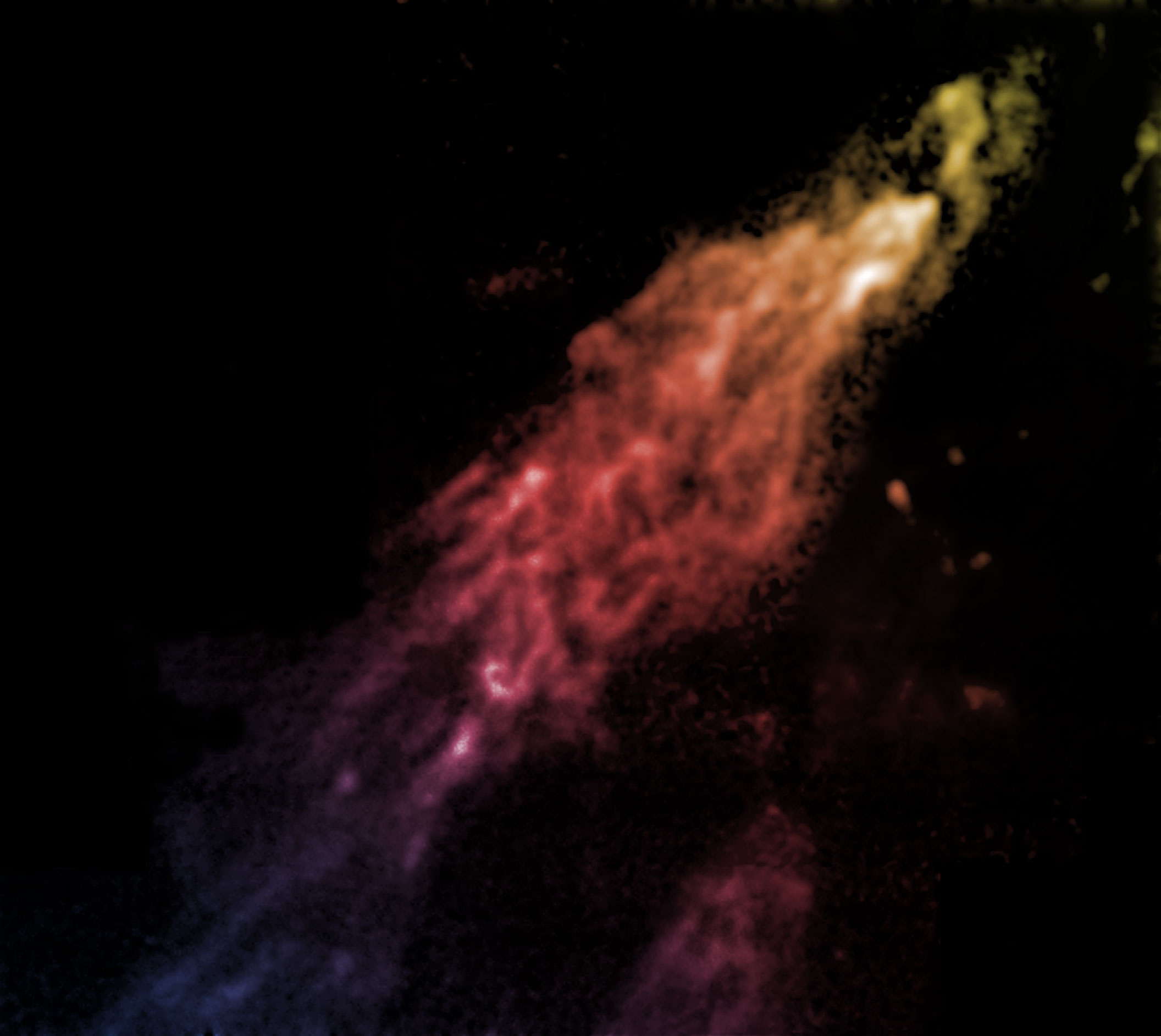
A giant cloud of mostly hydrogen gas with enough material to make over a million suns is heading towards our Milky Way at a speed of 45 miles per second. Called the Smith Cloud (after Gail Bieger-Smith who discovered it in 1963), this 9,800 × 3,300 ly high velocity cloud (HVC) is about 40,000 ly distant and is expected to slam into our Milky Way galaxy in about 27 million years, causing the birth of many new stars a quarter-way round the galaxy from us.

The Smith Cloud is located in the constellation Aquila, and has an apparent diameter around 11° across its long axis. It is only visible using radio telescopes (spin-flip transition of neutral atomic hydrogen), or by detecting hydrogen absorption lines Doppler shifted and superimposed upon the spectra of more distant stars that are shining through the cloud.
The origin of the Smith Cloud is unknown. It may have originated within the Milky Way galaxy itself, or it may be extragalactic. The upcoming collision may not be the first time the Smith Cloud has encountered the disc of the Milky Way. It may be embedded in a large halo of dark matter which would have kept the cloud from being completely disrupted during any past encounters.
The Smith Cloud is a great example of an object that would never have been discovered were it not for radio astronomy. Felix J. Lockman, who has published extensively on the Smith Cloud, has created Radio Astronomy: Observing the Invisible Universe for The Great Courses. Dr. Lockman’s engaging lecture style, his clear explanations, and thorough knowledge of the subject matter makes this the perfect introduction to the subject. Highly recommended!
Incidentally, Jay Lockman discovered a region in Ursa Major that is relatively free of neutral hydrogen gas and dust, thus affording a clearer view into the distant universe. It is named, appropriately, the Lockman Hole.
References
Alig, C. et al. “Simulating the Impact of the Smith Cloud.” The Astrophysical Journal 869 (2018): 1-6.
arXiv:1901.01639 [astro-ph.GA]
Hu, Y. et al. “Magnetic field morphology in interstellar clouds with the velocity gradient technique.” Nature Astronomy (2019): 1-7.
arXiv:2002.09948 [astro-ph.GA]
Lockman, F.. “Accretion Onto the Milky Way: The Smith Cloud.” Proceedings of the International Astronomical Union 11 (2015): 9 – 12.
arXiv:1511.05423 [astro-ph.GA]